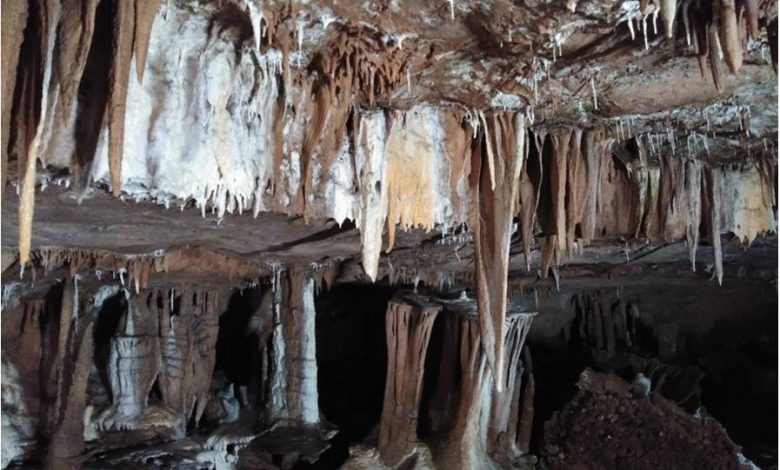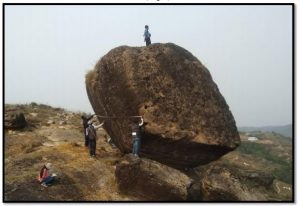GSI lists 12 geo-heritage sites in NE
The sites, three of which are in Meghalaya, have high tourism potential

Shillong, July 10: The scenic beauty and biodiversity of the states in the North East have always appealed to tourists. Now, the Geological Survey of India has identified 12 geo-heritage sites, which are geological marvels and have great tourism potential.
Of these places, three are in Meghalaya. Mawmluh Cave near Cherrapunjee, Mawblei or the God’s Rock and Therriaghat river section, all in East Khasi Hills, have immense geological importance.
A recent study has indicated that about 4,200 years ago, there was a major climatic event and the world experienced a very abrupt, critical and significant drought and cooling. Therefore, it coincided with a global climatic event and this marked the beginning of the Meghalayan Age. The lower boundary of the Meghalayan Stage is defined at a specific level in a stalagmite from Mawmluh cave in Meghalaya. Speleothems from the cave provide important records of Holocene palaeo-climate and palaeo-monsoon.
Mawblei or the God’s Rock is a huge slanting boulder, resting at an angle of about 45 degrees on the hill slope overlooking the Wahrashi River valley. The boulder is composed of the reddish-purple gritty Mahadek sandstone belonging to the Khasi Group of Cretaceous age. Thin partings of shale are also observed in the boulder. This rock can be termed as a perched block, which might have been produced by a rock fall or a landslide. Situated near Syntung village in Mawkynrew, the rock is locally known as Mawblei.

K-T Boundary mass extinction, Therriaghat river section, is probably one of the best preserved and most complete Cretaceous-Palaeogene K-T Boundary section in India. Most of the large vertebrates, planktons and many tropical invertebrates suddenly became extinct at the end of Cretaceous period. Recently, a new assemblage of ammonites has been recorded which probably represent few of the last representatives just before the mass-extinction in which the complete Sub-class Ammonidea were extinct.
“Once the Pandemic situation is controlled the people across the length and breadth of the country as well as international tourist are sure to throng places of tourist interest which are but different from the normal tourist destination,” a GSI statement said.
The other places in the North East which have geological importance are:
Naga Hill Ophiolite (NHO) in the Pungro region of Kiphire district of Nagaland is the ophiolitic rocks of mantle and oceanic crust parentage at the continental plate margin have vast potential for intensive research and economic growth. The NHO consists of a variety of Mesozoic and Ceno-zoicmagmatic, metamorphic and sedimentary rocks that originated at the India-Myanmar convergent plate boundary.
Majuli-River Island is situated on the turbulent waters of the Brahmaputra. In spite of the island losing quite a bit of its landmass to the rising waters, it is still recorded in the Guinness Book of World Records as the biggest riverine island in the entire world.
Another beautiful site is the Stromatolite Park on Carbonite comprising stromatolitic (algal) structure, − boulder outcrops with circular structures − hosted in limestone of Buxa Formation at Mamley in Sikkim was discovered little over a decade ago. It provides one of the rare examples of early life on Earth in Sikkim Himalayas.
Chabimura is famous for its panels of rock carving on steep mountain wall on the bank of river Gomati in the northeast Indian state of Tripura. There are huge carved images of Shiva, Vishnu, Kartika, Mahisasura Martini Durga and other Gods and Goddesses. Beautiful images are curved with a lot of dexterity on the rocky faces of Devtamura which is steep at 90 degrees. The hill ranges are covered with thick jungles and one can reach this abode of gods only after trekking through this jungle.
There is nothing in comparison to the artistry that rests here. It has many rock-cut sculptures and ancient temples. Unakoti is a historic Shaiva pilgrimage spot and dates back to 7th and 9th centuries. While the marvelous rock carvings, murals with their primitive beauty form the chief attraction, natural beauty including mountain scenery and waterfalls are an added bonus.
Reiek Cuesta (Mizoram) is a beautiful cuesta formed due to erosion of the Tertiary sand shale alternations near Aizawl.
Shonga-tser Lake or popularly known as Madhuri Lake in Tawang, Arunachal Pradesh, was formed due to damming of a river during an earthquake event.
Umananda island is the world’s smallest river island within the Brahmaputra River near Guwahati, Assam. Is composed of the rocks of Assam Meghalaya Gneissic Complex, its actually an inselberg.
Loktak Lake near Imphal in Manipur is the largest freshwater lake in India as well as the largest lake in North East India. It is famous for the phumdis floating over it.




